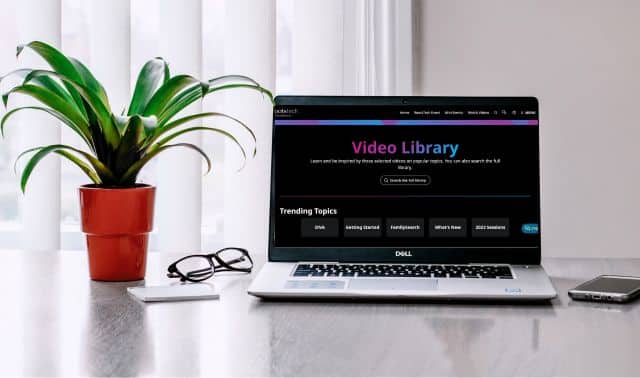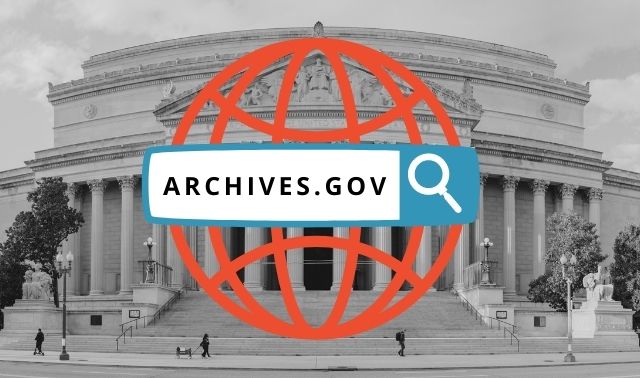For all the internet’s charms, it doesn’t have everything you need to find your family tree. Eventually, you’ll have to pack your bags, buckle your seat belt and get yourself to the state archives or library that has your ancestors’ records. There, you’ll find the original records listed in all those online indexes, documents that haven’t been microfilmed or posted online, unique manuscript collections and regional resources that aren’t anywhere else. Of course, preparation is a prerequisite for a successful, productive research trip. So get in gear with these expert planning tips.
Find out which records can be found where
Keep a running list of records you need, and which repositories hold those records. You can search online catalogs or finding aids for most facilities, or request brochures outlining their collections. See if you can find any indexes to the records online or at your local library. Then determine if you can order the microfilm or request a copy of the original record, or whether a trip to the repository is in order. Now let’s look at the state and local facilities you’re most likely to visit, along with the types of records you’d find there.
State archives and libraries
State archives generally house state and sometimes county government records, such as naturalizations made through state or local courts; older birth, marriage and death records; state census records; vital-records indexes; and government employment records. State library records may overlap the archives’ holdings. Their wealth of sources probably includes state, county and town histories; viral-records indexes; published genealogies; and federal and state census records.
State vital-records offices
Most states didn’t require statewide recording of births, marriages and deaths until 1900 or later. That’s not to say those records don’t exist, only that they may be at the county or town level rather than the state level. Use state indexes if you don’t know a record’s location; then you can find the county or town with the original.
Fees and security restrictions on vital records vary by state. For example, birth records may be closed for a specified length of time after they’re issued. You may have to provide identification and proof of a relationship to the person named in the record. Call or visit the vital-records office’s website (often part of the state department of health).
State historical societies
Some historical societies arc active, with large collections and Web sites; others are purely volunteer efforts. Either way, their collections focus on historical information, which may or may not include genealogical materials. But don’t overlook historical documents—they’ll have accounts of early settlers and community members who served the towns, churches and military in the area. If the society has a Web site, see if its catalog is online and whether any records are posted on the site.
Family History Centers (FHCs)
Family History Library (FHL) branch FHCs are located throughout the world and you can find one near you here. You don’t have to be a member of the Church of Jesus Christ of Latter-day Saints to use FHCs. Each one has a unique collection of microfilms on permanent loan. The FHL docs not circulate unmicrofilmed books to FHCs—but you can get the citation and then look for the book at another library. Search the FHL catalog online (click the Library tab) and study the state research guides (click Search, then Research Guidance) to see what records are available.
Local libraries and societies
Eventually, you’ll want to visit your ancestors’ hometowns, where you’re most likely to find unique records such as local cemetery transcriptions, school yearbooks and town histories. Plus, you’ll he able to see your ancestors’ homes, walk the same streets they walked and visit their graves. This is one of the most rewarding parts of family history.
Prepare Your Research Strategy
You’ve got a limited amount of research time when you’re away from home, and it’s easy to become overwhelmed in a large, busy facility. Familiarize yourself with the library and organize your research by following these suggestions.
Prepare a file with information on the facility
This should include hours and holdings, blank research forms to use there, local maps, parking and lodging details, tourist fliers and anything else pertaining to the area. Make note of rules regarding what you can bring into the library (some don’t allow tote bags, for example), how many photocopies you can make, and the like. And make sure you’ve answered the questions in the sidebar at right.
Talk with other researchers who’ve used the facility. You can do this in person or by subscribing to online mailing lists. Before my trip to the New York archives in Albany, one mailing-list member sent me a list of all the state census records held there, county by county, year by year. Just post a message stating that you’ll be visiting the facility, and ask for tips.
List your research goals for the visit
Review the types of records you’re seeking by reading that chapter in a genealogy how-to hook. Consult indexes, if they’re available, to the records you need. Then make a checklist of all of the records you intend to use, grouping them by type and putting them in order of year, volume and page number. You’ll want to highlight your “must-have” records—ones you can’t get anywhere else. It’s fine to have a long list, as long as you understand that you probably won’t complete it in one visit.
Pack only the files you need
Many researchers make the mistake of bringing every file they have. If you’ll need how-to information about the records you’ll be using, photocopy sections out of the hook rather than taking along the entire tome. Road-trippers can bring a little more and leave some items in the car, then retrieve them should the need arise. After several such trips, I realized that I never needed the things in the car, so 1 started leaving them at home, (You always can set out papers on your desk at home, so your spouse can find them when you call and ask him to check something.)
In your research tote, pack several notebooks, your file on the facility, records checklist and list of research goals, and lunch or snacks. Your pencil case should contain mechanical pencils (which you won’t have to sharpen), extra lead, erasers, a small stapler with extra staples, highlighters, binder clips, paper clips, rubber bands, self-stick notes, lots of change, crisp dollar bills for the vending machines, address labels, correction fluid, a small plastic magnifying glass, a 6-inch ruler and blank index cards.
Develop Your On-site Research Routine
After a few trips to libraries and archives, you’ll develop a comfortable research routine. These tips work well for me.
When you arrive, stake a claim
Place your notebook or other research items at one of the designated research tables. Never leave your pocketbook or laptop computer unattended, If you can’t stow them in a locker, keep them with you. I never take a purse to a facility. My wallet is in my briefcase; I put cash and credit cards in my pants pockets or waist pack. You’ll want to focus on your research, not on protecting your valuables.
Get an idea of the facility’s setup
Take a brief stroll around the room to see the setup. Where is the information desk, copier, bathroom, water fountain? If the facility offers a short tour, take it. Find out where to request materials, and pick up records request forms. Are there specific times of day when requests must he made? When is the “last call”?
Get down to business
I always open my notebook to the first blank page, date it and write the facility name and location. I know that all the notes that follow pertain to that trip until I encounter another dated page. This keeps my notes organized and gives me a complete look at the research I did at that location.
Take out your list of research goals. If necessary, look up the records you need. Log them in your notebook and make your first records request. Some facilities limit the number of requests you can make at one time, so adjust your requests accordingly. Try to make your first request as soon as possible upon arrival. This serves two purposes: First, by noting the time of your request, you’ll be able to gauge how long retrievals take. Second, during the wait, you can look up additional items of interest. When the librarian returns with your documents, note the time on your research log sheet. Try to do this several times during the first hour or so of your visit to get a feel for how many documents can be retrieved in a given time period.
As I review records from my checklist, I cross them off and make notes such as “five pages photocopied,” “abstracted document” or anything else I did with that record. I know exactly what I have and haven’t completed and how many pages of copies 1 should have. If you run out of time before you run out of records to look at (this always seems to happen to me), your checklist is a completely annotated list, so on the next visit, you can pick up where you left off.
Photocopy records rather than transcribing them on site
Your research time is worth more than the cost of a copy. 1 transcribe only if photocopies aren’t allowed or the copy isn’t readable. And with a copy, you’ll always have an exact duplicate of the information.
When making photocopies from a book, be sure to copy the title page first. It has all the information you’ll need to cite the source: title, author, publication place and date, and publisher. Once you’ve photocopied everything, take the copies and the original back to your table. Write the call number and the name of the facility on the first page of the photocopy. Make sure you duplicated all the pages you wanted. I also highlight the items of interest on the copies. Staple the pages together, note the number of copies on your research log and put them away.
About halfway through your research time, assess your progress
Decide which of the remaining records you should look at first. If I haven’t gotten to my highlighted “must-have” records by the halfway mark, I move them to the top of the list. An hour from closing time, look at your list of research goals one last time and request the most important records. Also reread your research goals and make sure they haven’t changed. You may have found information that leads you to a record that wasn’t on your original list, but is important nonetheless.
Pick up information sheets about the facility or others nearby
You can find wonderful local organizations that way. Ask the staff if the repository sells any publications relating to your research interests. Finally, make notes to yourself regarding the facility. Was it crowded? Was it too warm or cold? How many records could you look at in an hour? Were the clerks receptive to your requests? What special rules or obstructions to research did you face? Keep these notes in your folder for that facility, and review them before your next visit. Once you’ve reaped the rewards of doing in-person research, you’re sure to return soon.
Excerpted from The Weekend Genealogist by Marcia Yannizze Melnyk (Betterway Books).
From the September 2004 Trace Your Family History.




